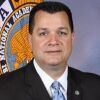Berkshire Hathaway CEO Warren Buffett, once said, “It takes 20 years to build a reputation and five minutes to ruin it.” He wasn’t referring to public safety agencies when he made that comment. But his comment speaks volumes to what can happen in an instance when bad publicity dominates your agency’s narrative.
We’ve seen it happen before. An event or situation occurs that creates public outrage. Afterward, leadership struggles to get in front of the negative publicity to reduce the damage done to the agency’s reputation.
We obviously can’t plan for everything, but customer service should always be at the forefront of departmental initiatives. From Warren Buffett’s perspective, a reduction in corporate reputation adversely impacts the bottom line. For a publicly traded company, losing money and reduced stock value is the worst-case scenario. In public safety, the stakes are much higher. We depend on public support to complete our mission.
Consider it strength in numbers. There are nearly 1.5 million people working in public safety (police, corrections, fire/EMS and communications).[1] Compare those numbers to the current U.S. population (332,403,650) and it becomes clear that agency personnel represent less than half of a percent (.44%) of the communities we serve nationwide. Simply put, we can’t fulfill our mission without public support.
What’s impressive about our numbers is that, even representing a small percentage of the population as a whole, we provide daily service and protection to everyone, in all communities. Add the challenges we currently face in terms of budgets and staffing shortages, and one could almost draw the conclusion there are truly superheroes among us. Most of the time, the public is grateful for what we do. But poor communication or one incident can derail public perception in a heartbeat.
So, how do we fulfill our mission while still providing exceptional customer service in a challenging world? The U.S. Department of Justice (USDOJ), Community Relations Service offers five recommendations to law enforcement agencies that I think translate well across all public safety sectors.[2]
1. Acknowledge and Discuss the Challenges You Are Facing
In previous articles, I’ve addressed the importance of communication in public safety and how most of life’s problems occur because we choose the wrong type of communication or fail to communicate often enough. The same is true when it comes to making sure your agency message is clearly understood. I’ve seen situations where an agency tries to hide from a high-profile incident, hoping the lack of information will stifle a negative response from the community. We are in an age of the 24-hour news cycle, social media and the desire for instant information. It won’t take long for details to emerge and it’s best to be forthright and in front of any situation that might create public outcry.
No one likes to deliver bad news. But getting in front of an issue and clearly articulating the facts gives the media and members of the community less time to create their own narrative. As the USDOJ notes, “a perceived act of misconduct by a single officer in one city not only damages police-community relationships locally; it can gain nationwide attention and reduce trust of the police generally.”[2] The key words here are “perceived act.” In other words, it doesn’t matter what really happened; it’s the perception of what happened. Good or bad, your communication in times like these matters.
2. Be Transparent and Accountable
This should come as no surprise and many agencies do a good job of this already. Posting your policy manual on the agency website is one example. Having a strong social media presence is also a good idea. Keeping the public informed about situations that occur in the community and your personnel’s involvement is good for business. Having some type of internal process for managing complaints and discipline is also important since the public demands accountability.
We also want to highlight situations involving exemplary service. Public awards ceremonies or other ways of recognizing your personnel and members of the community who assist during times of need goes a long way to enhancing or maintaining positive relationships. Achieving national or state accreditation demonstrates your agency’s commitment to excellence. Membership in professional organizations and having your personnel serve on national, state or local committees illustrates expertise and dedication to the trade.
3. Reduce Bias and Improve Cultural Competency
Make sure your agency has appropriate policies in place that reduce the likelihood of bias among personnel who provide necessary services within the community. It’s also important to ensure your personnel receive training on bias, diversity and different ethnic backgrounds or cultures. This is especially true if you experience a demographic shift within your community. Consider English as a Second Language (ESL) or other language issues. Hiring bilingual personnel or providing training in different languages might be necessary. Establishing some level of outreach in these parts of the community might also be effective. Hiring personnel with similar backgrounds helps community members gain trust in your agency.
4. Focus on Collaboration and Be Visible in the Community
We can’t do our jobs without community support and assistance. If there is distrust within the community, hold public forums or create programs that focus on collaborative efforts. School programs, community outreach activities, an open house or even ridealong programs can go a long way to reshaping public perception. Make sure your personnel understand the importance of being visible, especially during times of need. Maintain or create open channels of communication with community leaders, members of clergy and community service organizations. Having a presence during community events such as fairs, other special events, and school board or other local government meetings provides another avenue for communication between the agency and the public.
5. Promote Internal Diversity and Professional Growth
We already know the importance of making our agencies reflect the diverse communities we serve. Recruiting is one of the biggest challenges facing public safety right now; however, it’s important we still try to recruit the best and brightest from all demographics. Enhancing and expanding recruiting efforts is more important now than ever. It might mean hosting career fairs, visiting local academic institutions or presenting at military installations. It might also mean traveling to other jurisdictions or even out of state to attract prospective applicants.
Ensure your agency has a fair hiring process that doesn’t adversely impact any group of people. It’s also important not to forget about your incumbents. Is your hiring process transparent and fair? Are there adequate opportunities for upward mobility or other paths for career development? If not, you’ll likely experience a revolving door as personnel move onward and upward elsewhere. If your employees feel valued and empowered, that attitude will carry over to how those personnel interact with the public.
Don’t Take It for Granted
Even if your agency has never experienced negative public perception, it’s important you conduct a self-assessment of attitudes and perceptions held by your personnel and the public. The last division I commanded was responsible for facilitating a public opinion survey. These can be valuable instruments for keeping agency leadership and other stakeholders apprised of community input and perceptions. Using a similar instrument to gauge the attitude of your employees can also be helpful.
Whatever you do, just don’t take anything for granted or let your guard down. If you’re a leader, keep your personnel informed and do the same in the community. Hold regular meetings with community leaders and ensure your agency maintains good relationships and open communication with the media. This can go a long way to getting your message out when critical events occur or when bad things happen.
No one likes surprises. Get out in front of anything that might create a negative public reaction. Hold press conferences or post information on your agency website or through social media. Remember, if you don’t, someone else will, and that removes the momentum from your narrative. While maintaining your agency’s commitment to service and protection, don’t forget about the customer service aspect. In the words of Coach Vince Lombardi, “It takes months to find a customer … and seconds to lose one.”
References
1. U.S. Bureau of Labor Statistics. (2022) May 2021 National Occupational Employment and Wage Estimates.
2. U.S. Department of Justice – Community Relations Service. (2022) Importance of Police-Community Relationships and Resources for Further Reading.



